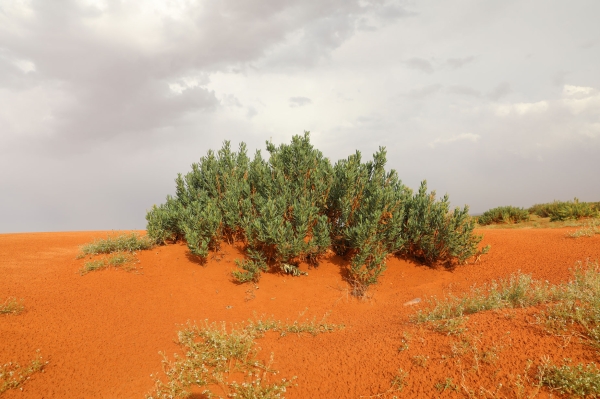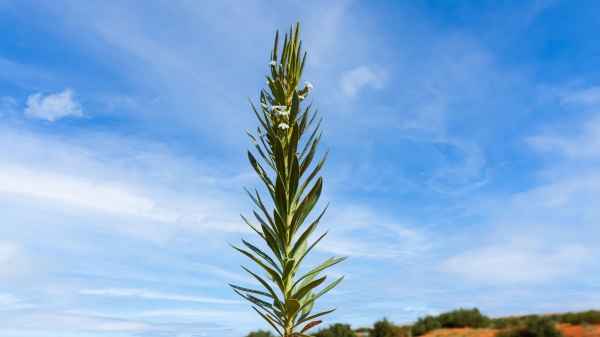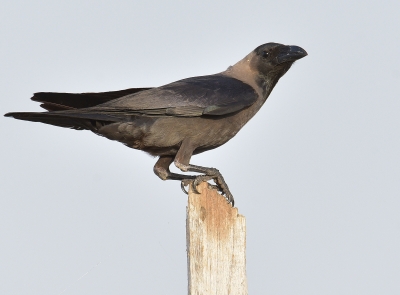


Rhazya Stricta, commonly known as Rhazya, Harmel, or Hamad, is an evergreen and poisonous shrub of the Apocynaceae species. It is found in the Arabian Peninsula. It is cultivated in Riyadh City, the capital of the Kingdom of Saudi Arabia. It is endemic to subtropical regions. Its robust leaves enable its quick adaptation to desert conditions. It is a medicinal plant.
Characteristics and attributes of the rhazya shrub
The rhazya shrub is known for its fast growth ability. It grows up to one m. It features a wedge root that can withstand high salinity levels. It bears dense, lance-shaped, leather-like leaves that grow up to ten cm. The shrub maintains its green color in desert areas. Its leaves turn brown upon exposure to drought for prolonged periods. It features several branches that extend over the soil surface. Its branches bear 0.5 cm white flowers that bloom from mid-June until the end of August. It produces small pod-shaped fruits containing black seeds. These fruits grow up to five cm.
Cultivation of the rhazya shrub
The rhazya shrub grows in sandy and gravelly loam soils. It propagates from seeds. It can withstand desert conditions and urban environments. It is sensitive to dusty environments. It has a frost tolerance down to minus nine degrees Celsius. It can withstand high salinity levels estimated at five thousand parts per million. It requires minor care and pruning. It spreads fast in open areas.
Uses of the rhazya shrub
The rhazya shrub is used for delimiting terraces and water courses banks, planting streets, and enhancing the ecosystem. It is cultivated in urban areas, open spaces, and natural sites.
Related quizzes
Related articles


